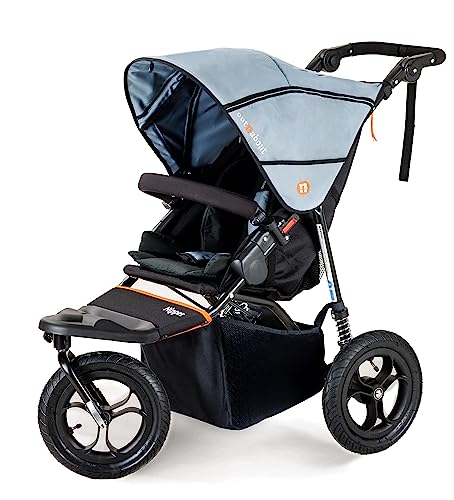Buzzwords De-Buzzed: 10 Alternative Ways Of Saying Pram And Pushchair

Prams and Pushchairs: A Comprehensive Guide for New Parents
Browsing parenthood includes a wide variety of choices, one of the most significant being the option of an appropriate pram or pushchair. These important products function as a sanctuary for babies and a means of transport for caregivers. Whether strolling through the park or running errands, a good pram or pushchair can enhance the experience for both parent and kid. This article provides an extensive take a look at the types of prams and pushchairs offered, their features, and vital factors to consider to make before purchasing one.
Comprehending Prams and Pushchairs
While the terms "pram" and "pushchair" are typically utilized interchangeably, they refer to somewhat different items. Understanding the difference can aid in making an informed choice.
| Term | Description |
|---|---|
| Pram | Typically developed for infants, prams have a totally flat structure, enabling the baby to rest conveniently. They typically come with a carrycot and are ideal for newborns up to about six months old. |
| Pushchair | Developed for older babies and toddlers, pushchairs typically have a more upright seating position. They are versatile and can normally be reclined or adapted to cater to the child's growth, starting from around 6 months and reaching preschool age. |
Kinds of Prams and Pushchairs
When choosing a pram or pushchair, various designs will accommodate numerous parenting needs and lifestyles. Here are the primary types readily available on the marketplace:
Traditional Prams
- Timeless, vintage styles with a sturdy carrycot.
- Perfect for newborns.
- Typically bulkier, ideal for leisurely walks.
Pushchairs
- Lightweight and often foldable, perfect for travel and fast outings.
- Can be front-facing or rear-facing.
- Include functions like adjustable handlebars and reclining seats.
Travel Systems
- A mix of a safety seat and a pushchair.
- Practical for car-to-pushchair transitions without disrupting the baby.
- Generally more expensive however worth thinking about for their multifunctionality.
Multi-Functional Strollers
- Offer different setups, allowing for a carrycot, sit-up seat, or cars and truck seat attachment.
- Versatile according to the kid's growth and changing requirements.
- Can frequently be used for several children with attachments.
Light-weight Strollers
- Ultra-portable, perfect for moms and dads on the go.
- Easy to fold and bring.
- Typically suggested for older babies or young children.
Key Features to Consider
When selecting the right pram or pushchair, a couple of important features ought to be taken into consideration:
Safety Features
- Try to find a five-point harness system to secure the kid.
- Models with braking systems that are simple to run with the foot deal added security.
Weight and Size
- Think about just how much weight the caregiver can handle, and the storage space readily available.
- A light-weight design might supply easier maneuverability, while a bulkier design may offer better stability and toughness.
Sturdiness and Material
- A frame made from high-quality products guarantees durability.
- Weather-resistant fabrics can offer convenience and ease of cleaning.
Ease of Folding
- Designs that can be folded quickly and easily are normally favored, particularly for parents who need to use public transport or have restricted storage space.
Handling and Comfort
- Adjustable handles can accommodate various heights, ensuring a comfortable push for all caretakers.
- Great suspension is necessary for smoother rides on irregular surfaces.
Preparing for the Purchase
Before purchasing, it's advisable to perform extensive research. The following steps will help new moms and dads make an informed choice:
Define Your Needs
- Consider lifestyle elements such as travel frequency, metropolitan vs. suburban living, and storage space.
Budgeting
- Prams and pushchairs vary significantly in rate. Set a sensible budget, bearing in mind security and quality.
Test Drive
- Whenever possible, test the pram or pushchair. Pay attention to weight, maneuverability, and general convenience.
Parent and Baby Reviews
- Look for feedback from other parents who have used the item. This can offer insights into real-world efficiency.
Look for Warranty
- A great guarantee can protect your investment and make sure durability.
Frequently asked questions
Q1: At what age can a baby utilize a pushchair?Typically, babies can
start utilizing a pushchair around 6 months when they can hold their head up independently. Prior to that, a pram or carrycot is suggested. Q2: Are travel systems worth the investment?Yes, travel systems can provide terrific worth for parents who need a smooth transition between the
cars and truck and stroller. Pram To Stroller offer convenience and flexibility, particularly for households who often travel. Q3: How long can you use a pushchair?Most pushchairs can be utilized until a kid is around 3 to 4 years of ages, though some models use features for bigger children. Q4: Do I require a brand-new pram or pushchair for each child?If your existing design remains in excellent condition and satisfies security requirements, there might be no need for a new one. Nevertheless, consider factors like wear and tear, health, and developing requirements. Choosing the best pram or pushchair is an essential choice for any brand-new parent. With a range of designs, types, and includes readily available, parents can find a design that suits their needs, way of life, and spending plan.
By investigating and understanding the distinctions in between prams and pushchairs, moms and dads can make a confident and informed choice that will provide the best, most practical experience for their child. As they start this interesting journey of being a parent, having the ideal transportation option can really improve the experience of raising a child.

